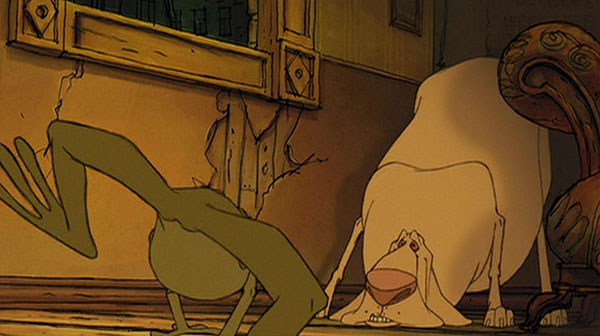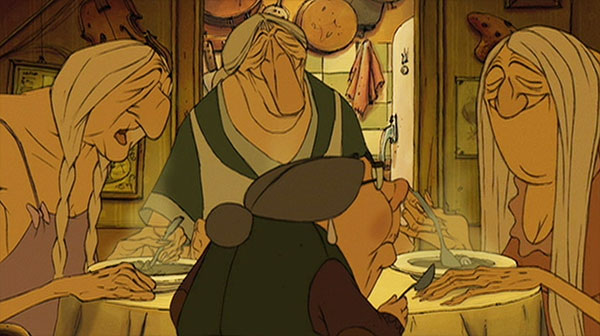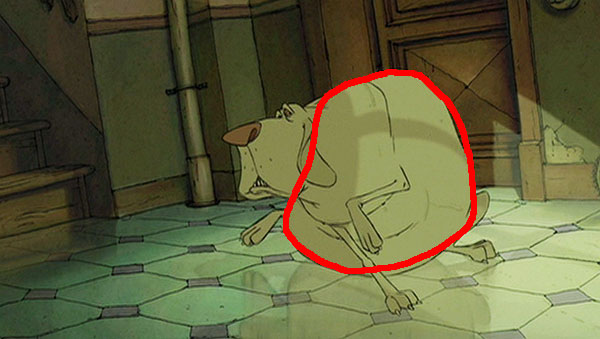
Examples from The Triplets of Belleville, by Sylvain Chomet
How objects react to contact with other objects or changes in motion. Provides information about the weight and rigidity of an object.

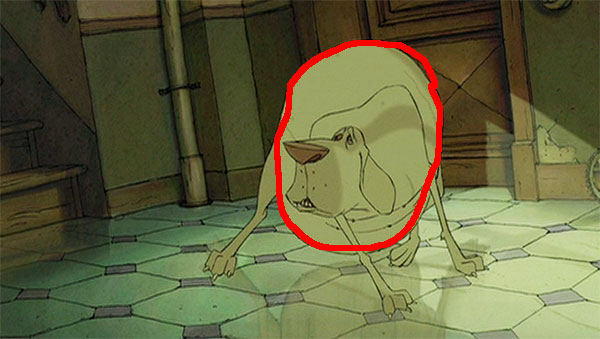
Action which draws the viewers attention to an area of the screen where an important action is about to occur. The frog looks at the approaching foot, preparing us for the jump.
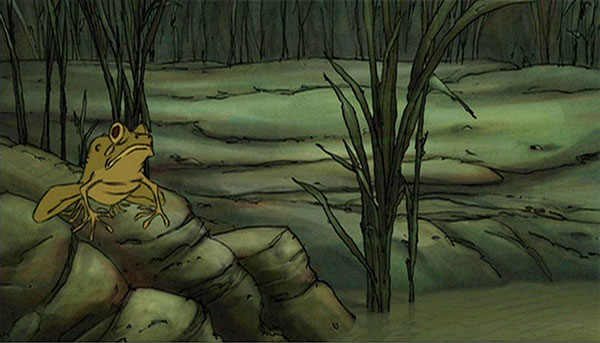
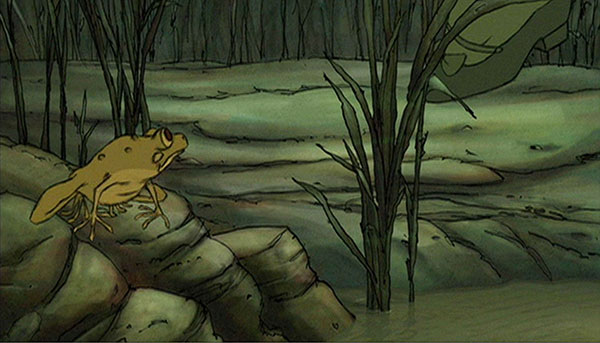
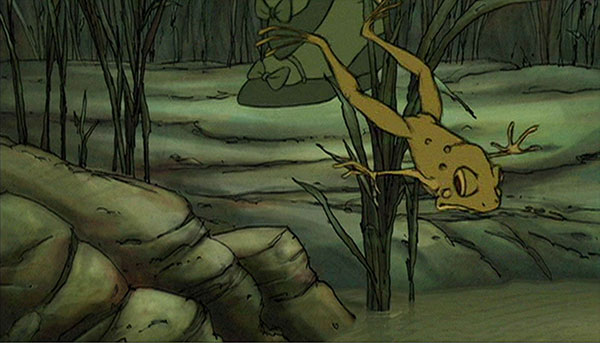
Using setting, props, lighting, and composition to convey mood, direct attention,
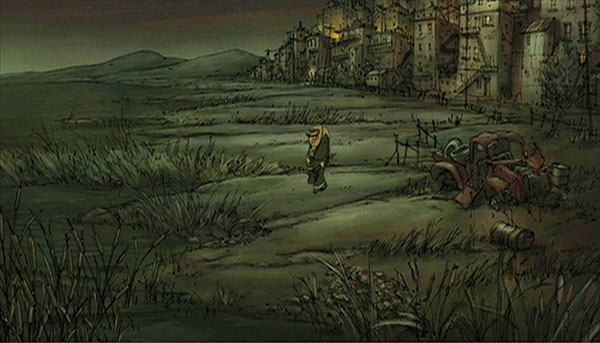
How the action terminates. It is rare for an organic object to abruptly and uniformly stop. Here one of the triplets sits down. But even after the chair is planted, the figure continues into a brief bounce.
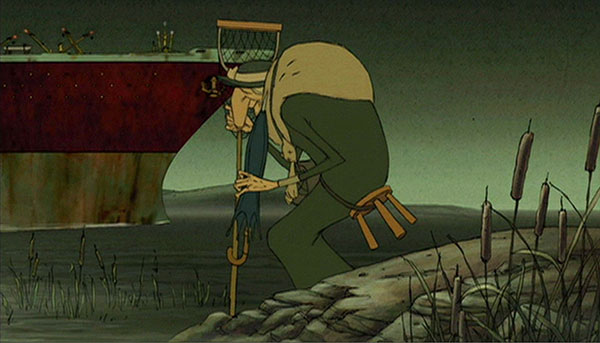

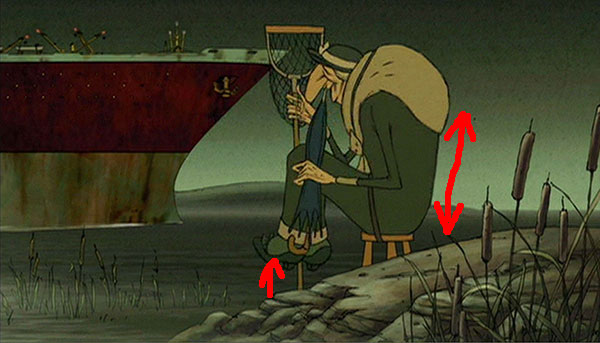
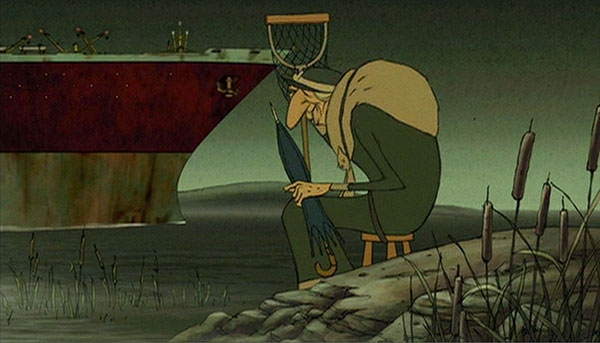
How an action propagates through a figure. Here the dog shakes it's head, but the motion of the ears and jowls lag at different rates.
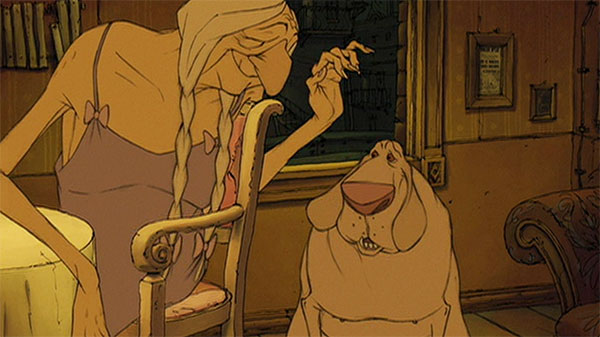
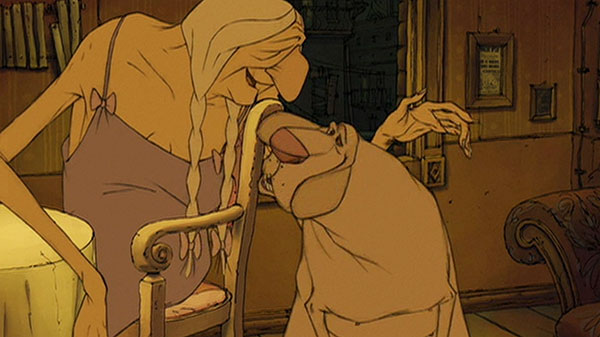
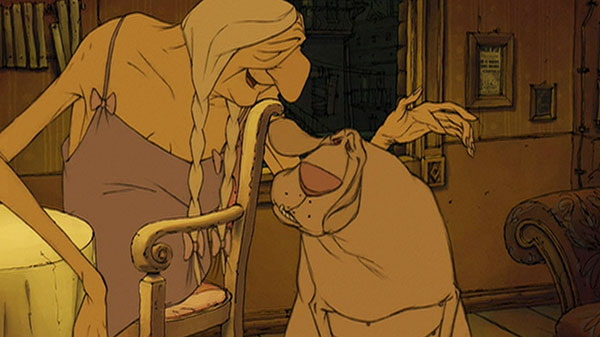
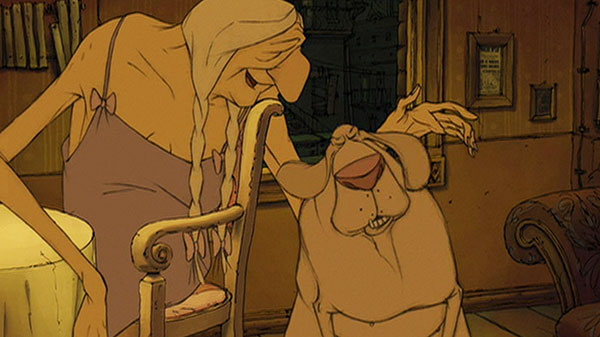
Unless an object is shot out of a cannon, or hits a wall, there will be acceleration and deceleration. In the graph editor an ease-in curves from a flat horizontal initial key. An ease-out curves to a horizontal final key. Here we see one of the triplets slow to a stop as she listens to the piano.
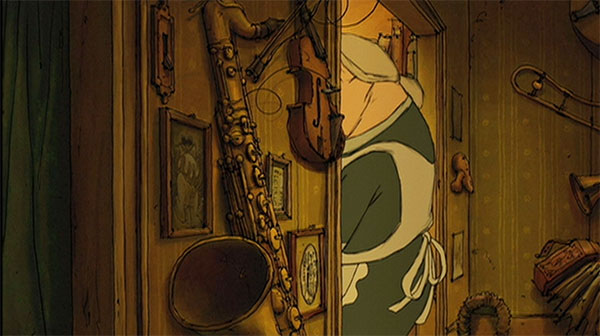
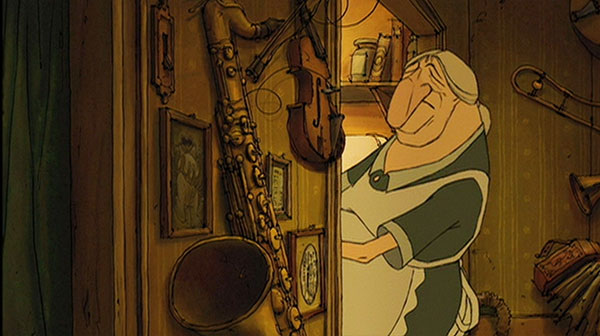
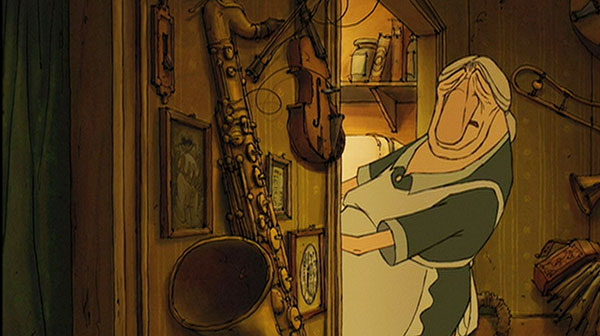
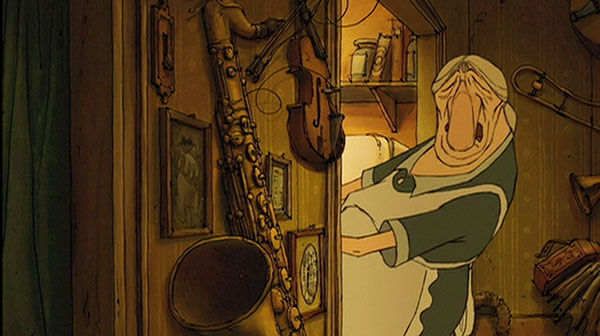
Motion in a curve appears more natural and less mechanical. Here the seat attached to the hips is going through multiple arcs to convey the motion of the figure.
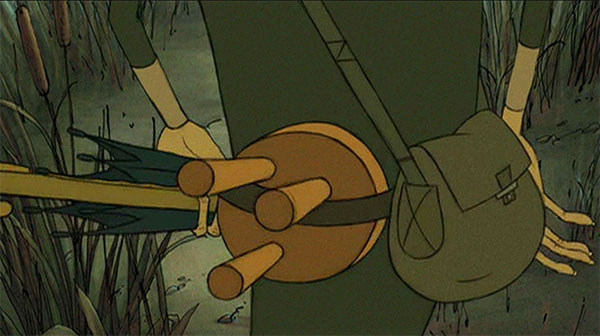
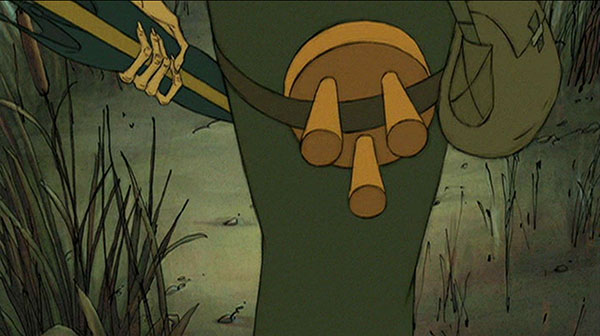
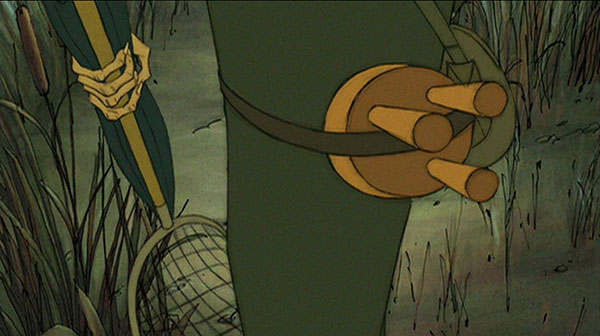
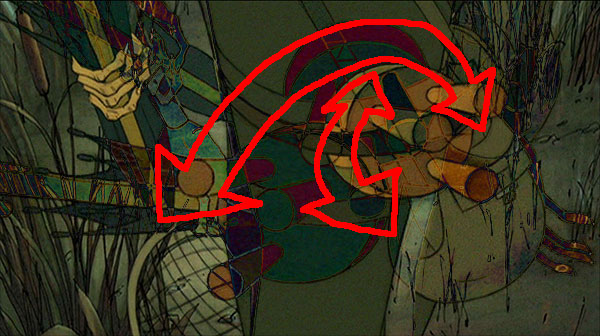
Motion to complement the primary action. Here the primary action is eating with a spoon. The secondary action is the bizarre ballet of the frog leg. Related to Overlapping Action (theoretically the motion of the frog leg is driven by the motion of the head) but it is also intended to highlight the strangeness of the meal. As if it needed highlighting...
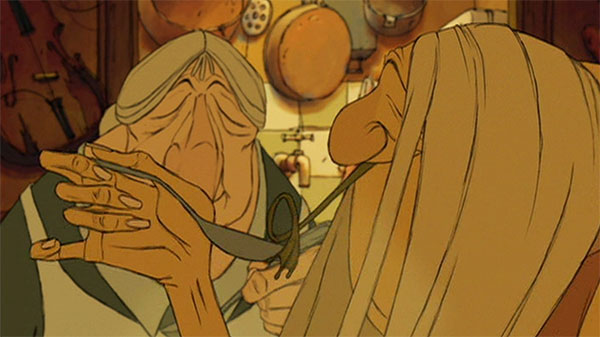
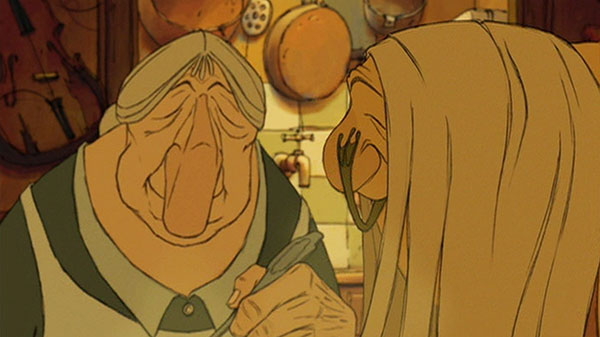
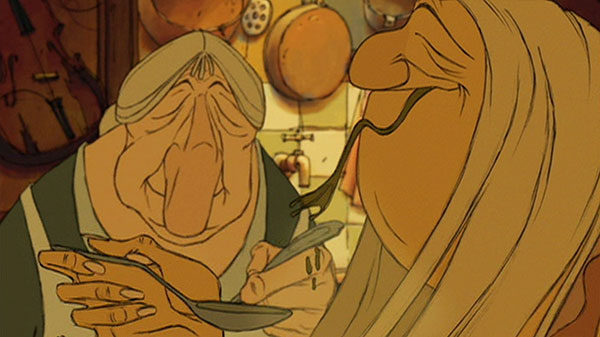
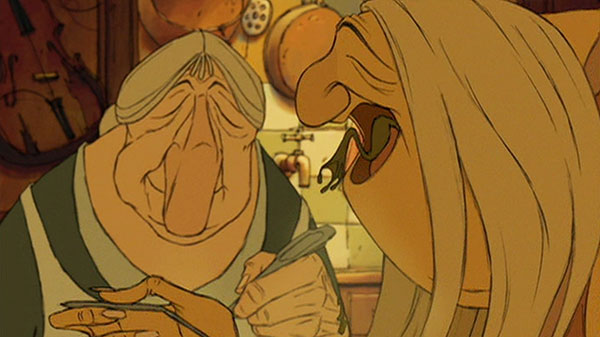
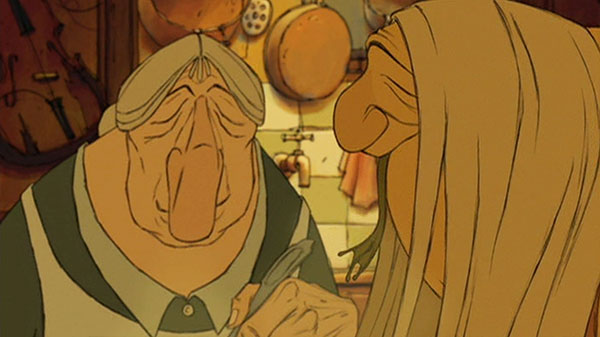
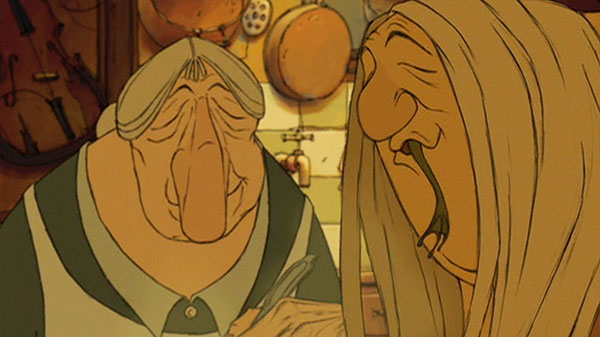
The timing between actions gives them expressive qualities. Here the fast, jerky motion of the frog helps us feel the shock of being blasted out of the water by a hand grenade.
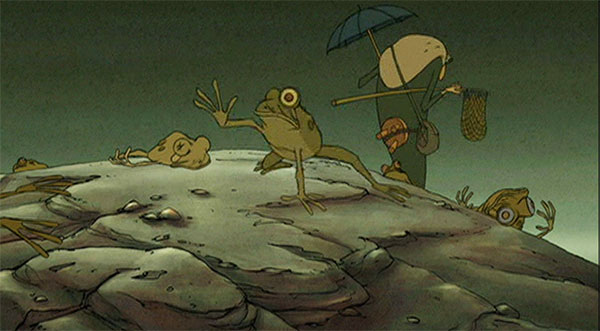
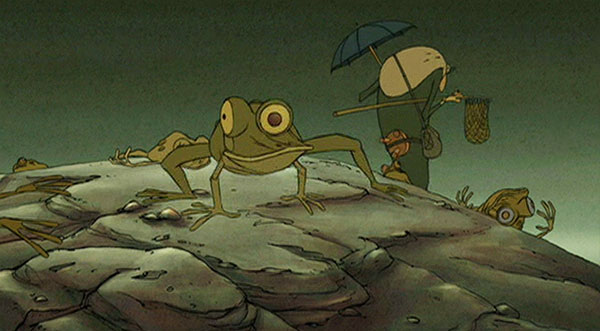
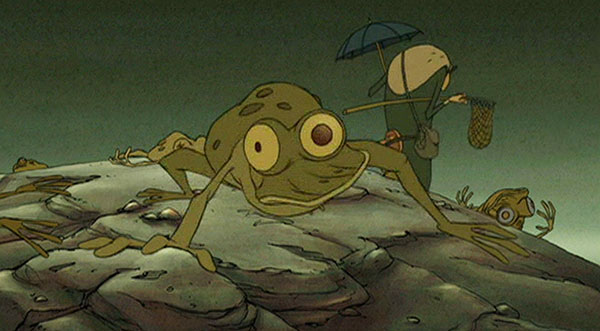
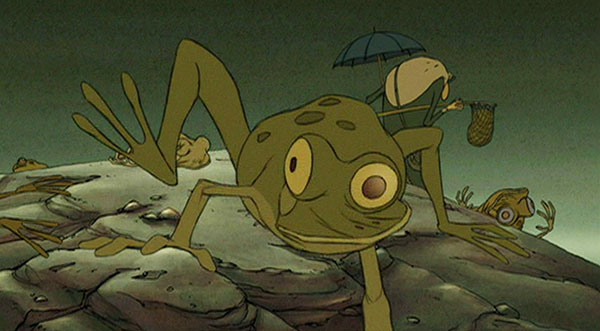
Pronounced motions and poses which still obey a consistent physical set of rules.
